On becoming an English Proficiency Teacher [C2 Proficiency/CPE Tutor Online]
I turned 40 on April 28, 2025. Many people that turn 40 might be overcome with nostalgia or crippled with regret. Fortunately, my forward-thinking mindset appears to be trumping this thing I sometimes have about looking back. Indeed, I’ve decided to stop marketing myself as a versatile jack-of-all-trades (check out the ghastly number of courses I teach). I've recently been focusing on becoming an English proficiency teacher with an emphasis on preparing students for the C2 Proficiency exam.
My experience teaching students who were proficient in English
Having taught English to several thousand students since 2006, there are only three students who stand out in my memory for their spoken proficiency in the language. All female, two of those students were Polish and one was Russian. I taught one of the ladies, Maja, in a language school in Płock, Poland, while I tutored the other two students online.
First of all, I agree with Elspeth Pollock in her post Teaching C2: facing the challenge and mastering the magic! that “teaching C2 is way out of most of our comfort zones”. Frankly, Maja didn’t pick my brain about the ins and outs of complex grammatical structures or the meaning of some obscure lexical items. However, the other two ladies liked to quiz me. There were moments when I felt out of my depth because some of their questions had me stumped. Unfortunately, I wasn’t always the font of all knowledge they hoped I would be. I have always set high standards for myself. Therefore, I’d be overcome by crushing self-doubt in the days after I had to tell one of these students that I didn’t know the answer to a question or that I’d have to double check a hunch I may have had in a grammar reference book or online.
In recent years, that self-doubt has rather transformed itself into self-belief. Not exactly unwavering self-belief, but an acceptable form of self-assuredness and composure. All in all, I believe I’m smart enough and experienced enough to make it as an English Proficiency Teacher with a view to preparing students for the C2 Proficiency exam.
Moving away from the grammatical syllabus in favour of drawing students’ attention to collocations and lexical chunks
Looking back on my time teaching those three ladies, and more advanced students in general, I’ve placed an increasing emphasis as the years pass on the learning of collocations and lexical chunks. By contrast, I’ve moved further away from the grammatical syllabus. Those who choose to teach according to a grammatical syllabus hold the flawed belief that the mastery of the English grammatical system occurs in a perfect linear order, beginning with the verb ‘be’ and then moving on to so-called easy tenses such as the present continuous and present simple. Anyway, allow me to define the meaning of a collocation and a lexical chunk with the help of Timmis (2015):
1. Collocation - a combination of two lexical words often found together or in close proximity, e.g. make sense; dire straits.
If a pair of words is separated by an article, as in have a party, this is still a collocation in the eyes of Timmis (2015, p.24). Moreover, I’m inclined to side with Timmis (ibid.) who believes that phrasal verbs such as carry out should be treated as one word. Therefore, carry out an experiment counts as a collocation.
2. Lexical chunk - Timmis (2015, p.26) defines a lexical chunk as a “frequent meaningful sequence of words that may include both lexical and grammatical words”. To give an example, ‘to a certain extent’ includes an article and a preposition. Articles and prepositions are function words, i.e. words whose function is to express a grammatical and structural relationship between the content words in a sentence.
Phrasal verbs, idioms and compounds, which English language experts have traditionally recognised as multi-word units, are also lexical chunks (Schmitt, 2000, in Timmis, 2015, p. 26).
As the examples below show, the term ‘lexical chunk’ may cover many other sequences of words which commonly co-occur, such as:
- last but not least
- depend on
- play a role
- to a certain extent
- by the way
Overall, a ‘chunk of language’ is “a sequence of words which native speakers feel is the natural and preferred way of expressing a particular idea or purpose” (Lindstromberg and Boers, 2008, p.7).
Exploiting the many collocations and lexical chunks you come across
It’s a point that I’ve driven home time and time again on this blog. Being constantly exposed to lexical chunks and collocations, and consequently recording them somewhere such as in a notebook, is only the first step in the process of achieving proficiency in spoken English.
If you’re seeking to gain top marks in the speaking part of the C2 Proficiency exam or reach proficiency in spoken English in general, you need to have a strategy up your sleeve to both record and recall in the heat of conversation all those wonderful collocations and lexical chunks.
What’s personally helped me master two foreign languages - Serbian and Polish - is a strategy I refer to as the Word-Phrase Table. I won’t go into too much detail about the strategy here as you can check it out in the link. However, I’d just like to demonstrate it for the purposes of preparing yourself for the C2 exam, in particular the speaking part:
1. Let’s say you’ve come across the following phrasal verbs in an article:
- put up with (tolerate; continue to accept an unpleasant situation)
- look up to (admire; respect; idolise)
It’s no good simply writing these phrasal verbs down in a notebook or creating flashcards via an app such as Anki. You need to get to know multi-word units in their entirety.
I recommend my students to create two columns on a Google Doc, the left-hand column for mother tongue translations (L1), and the right-hand column for all information in English:

2. Of course, you can find example sentences containing target lexical chunks (in this case, phrasal verbs) in good online dictionaries, such as Cambridge Dictionary, and then add them to your Word-Phrase Table. However, I think that language acquisition goes much deeper than the recording of random sentences which have absolutely no relevance to the language learner’s life. Therefore, I advocate that these sentences are PERSONALISED. This means that the sentences should describe your real life experiences, current life situation and genuine opinions etc. I will now add some sentences below the phrasal verbs which reflect my life experiences and current life situation:
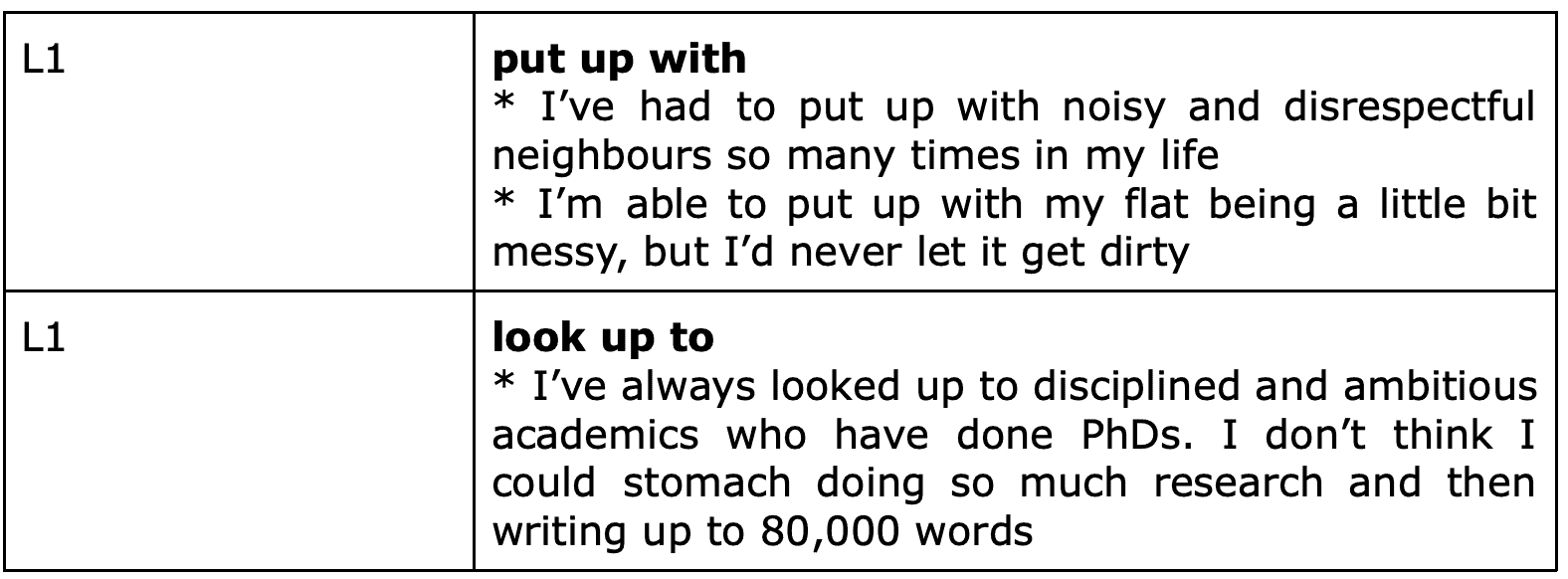
3. I am a firm believer in the connection between the visualisation of the written word and the retrieval of chunks and even whole sentences when speaking English. Therefore, don’t be afraid to italicise, capitalise, underline, colour, bold, change the font of or increase the font size of these lexical chunks to aid the process of memory retrieval when speaking English:
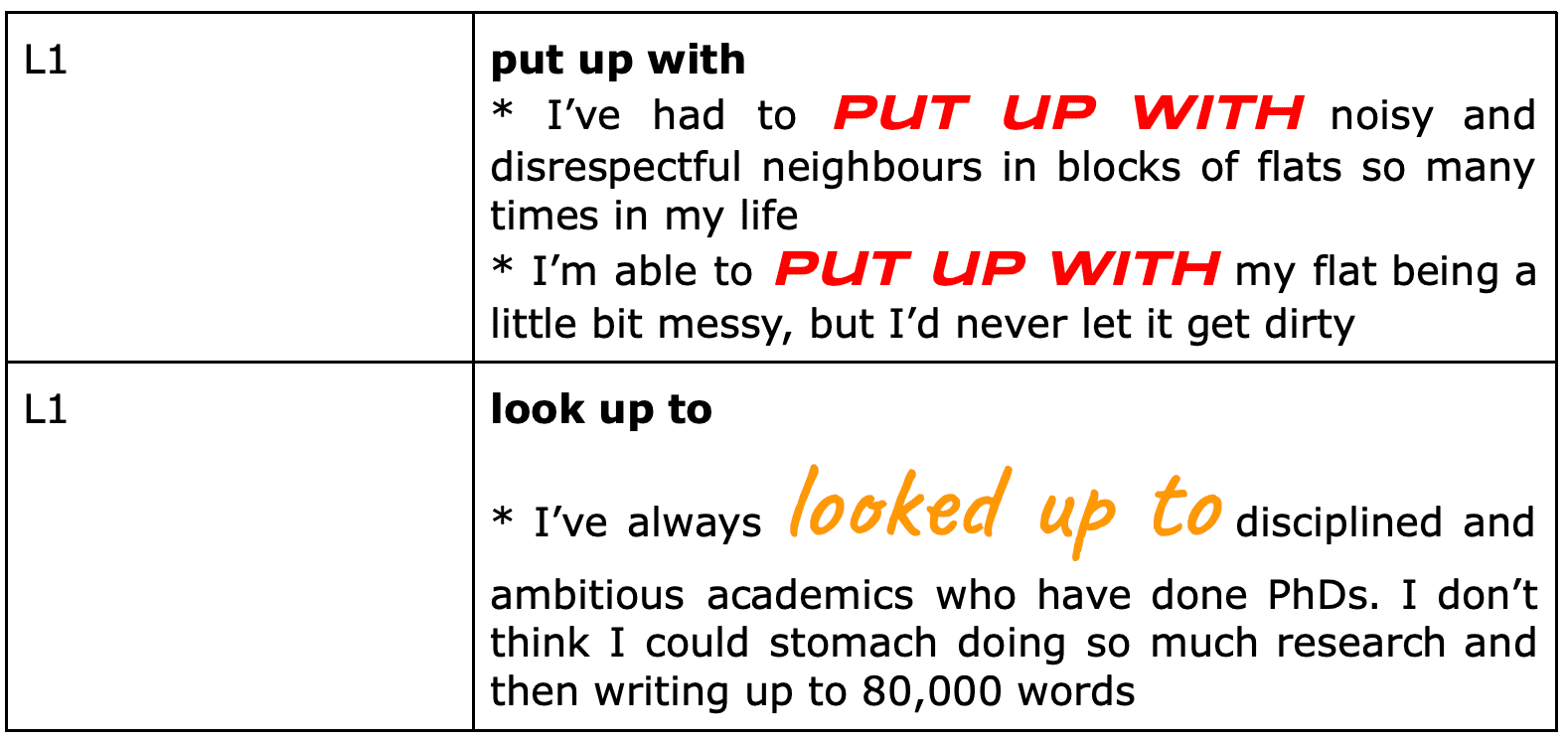
4. As you add new lexical chunks, or indeed single vocabulary items to your Word-Phrase Table, you need to immerse yourself in spaced repetition to ensure the target language items and even whole sentences are eventually committed to long-term memory. I’m not one for Spaced Repetition Flashcard Apps because I think experienced language learners will eventually get a feeling for when the time is right to go over material. It may be every day to begin with, then every two days, then every five days, then every seven days, and so on.
What is the basis for personalising lexical chunks?
One should personalise lexical chunks, such as phrasal verbs, not only for the acquisition and potential spoken production of the said multi-word units, but all of the surrounding grammatical information as well. Any decent English proficiency teacher would check their students’ personalised sentences.
Let’s say that you have added the chunk ‘get used to’ to your Word-Phrase Table. It’s one thing being able to recall this multi-word unit. However, the essence of fluency is recalling the grammatical patterns surrounding the target chunk as well. In the case of ‘get used to’, an -ing gerund should immediately follow when it comes to activities such as:
I simply can’t get used to working night shifts
Connecting the importance of learning collocations and multi-word units to the C2 Proficiency exam
If we are to accept the view that being able to verbally string together lexical chunks one after the other is the essence of fluency, there is an abundance of information in the C2 Proficiency Handbook for Teachers for exams from 2023 which hints at the importance of becoming acquainted with such multi-word units.
Use of English tasks in the Reading and Use of English Paper
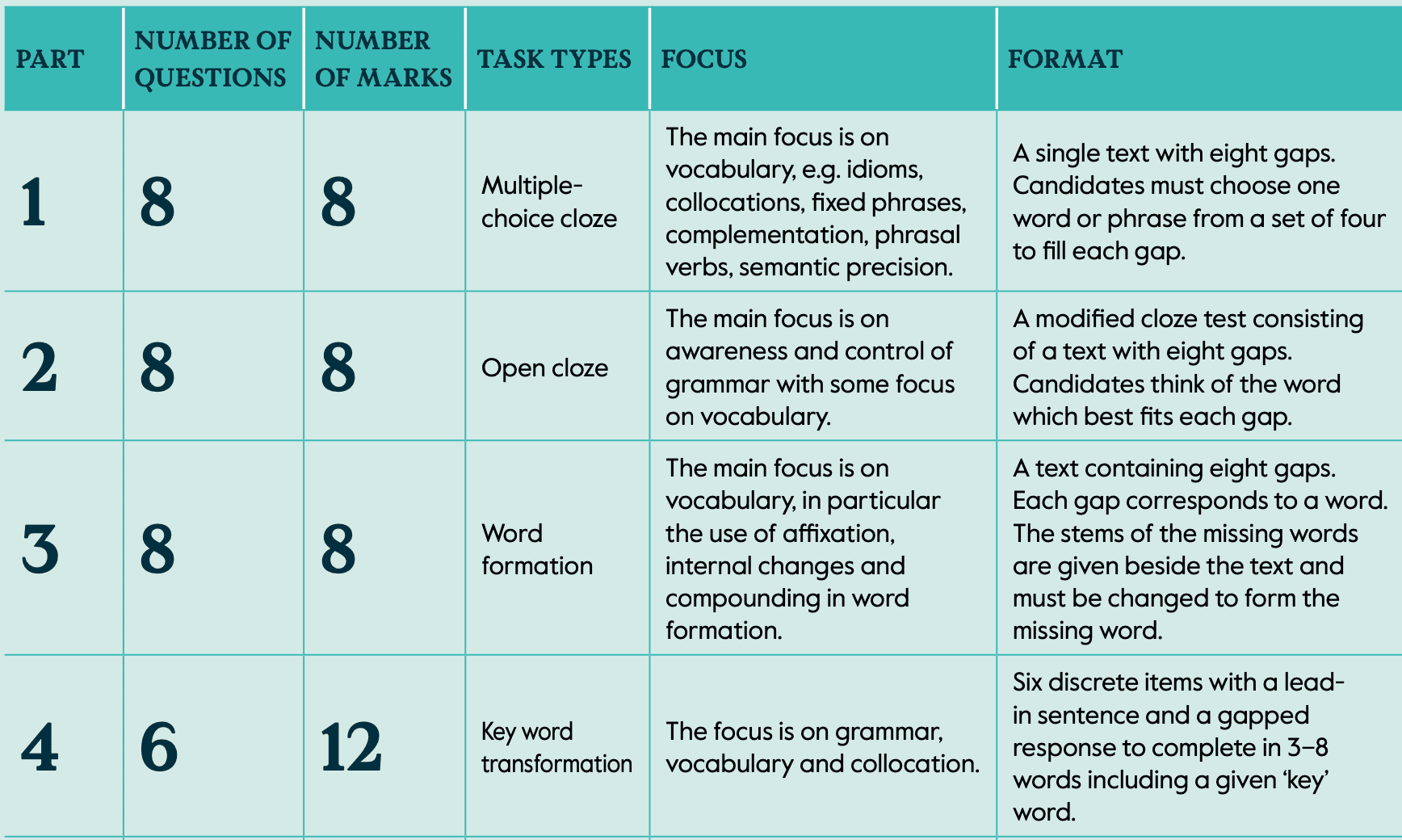
I have done countless C2 Proficiency Use of English tasks to find out what my future C2 Proficiency students will be letting themselves in for. Frankly, anyone serious about becoming an English proficiency teacher should do these tasks to remind themselves that they are not infallible. Even the most experienced and highly qualified English language teacher will make the odd mistake, particularly when it comes to transforming (paraphrasing) sentences in part 4 of the Reading and Use of English paper. Every mistake a teacher makes may just turn into an invaluable piece of advice for future C2 Proficiency exam candidates. Anyway, do check out this extensive guide to acing the Use of English section of the Reading and Use of English paper.
As you can see in the information table above, the main focus of Part 1 of the C2 Proficiency Reading and Use of English paper is on vocabulary. Namely, there is an overriding emphasis on being able to recognise multi-word units (phrasal verbs, idioms and fixed phrases) as well as collocations. Here’s an example Multiple-Choice Cloze task from a Sample Test compiled by Cambridge English Language Assessment:

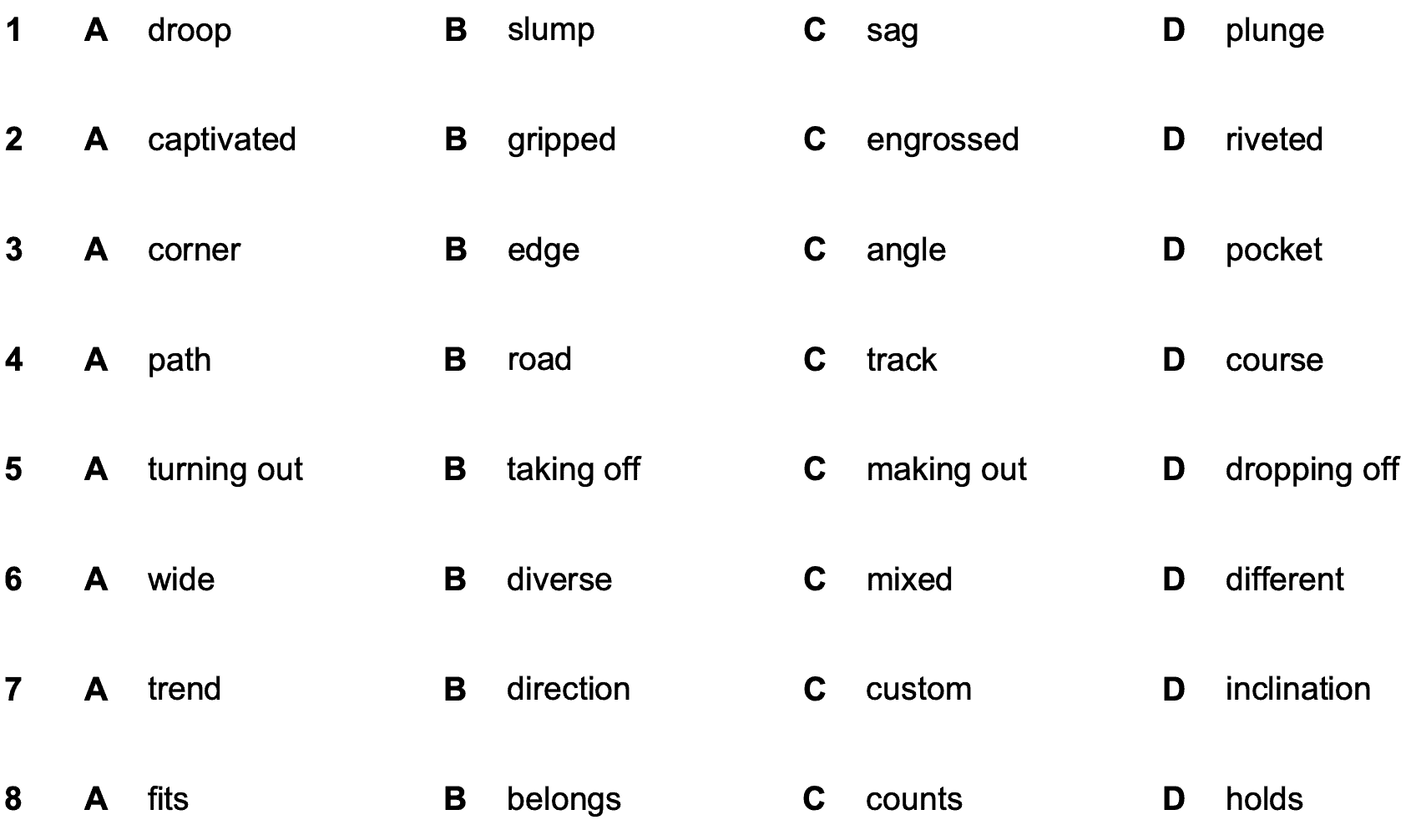
The solutions to the task illuminate the prominence of collocations and lexical chunks, for example:
2. engrossed in
3. exotic corner (of the globe)
4. beaten track
5. take off (into)
6. diverse planet
As for part 3 of the C2 Proficiency Reading and Use of English paper - the Word Formation task - we see further evidence of the need for candidates to read voraciously and pay attention to collocations and chunks of language:
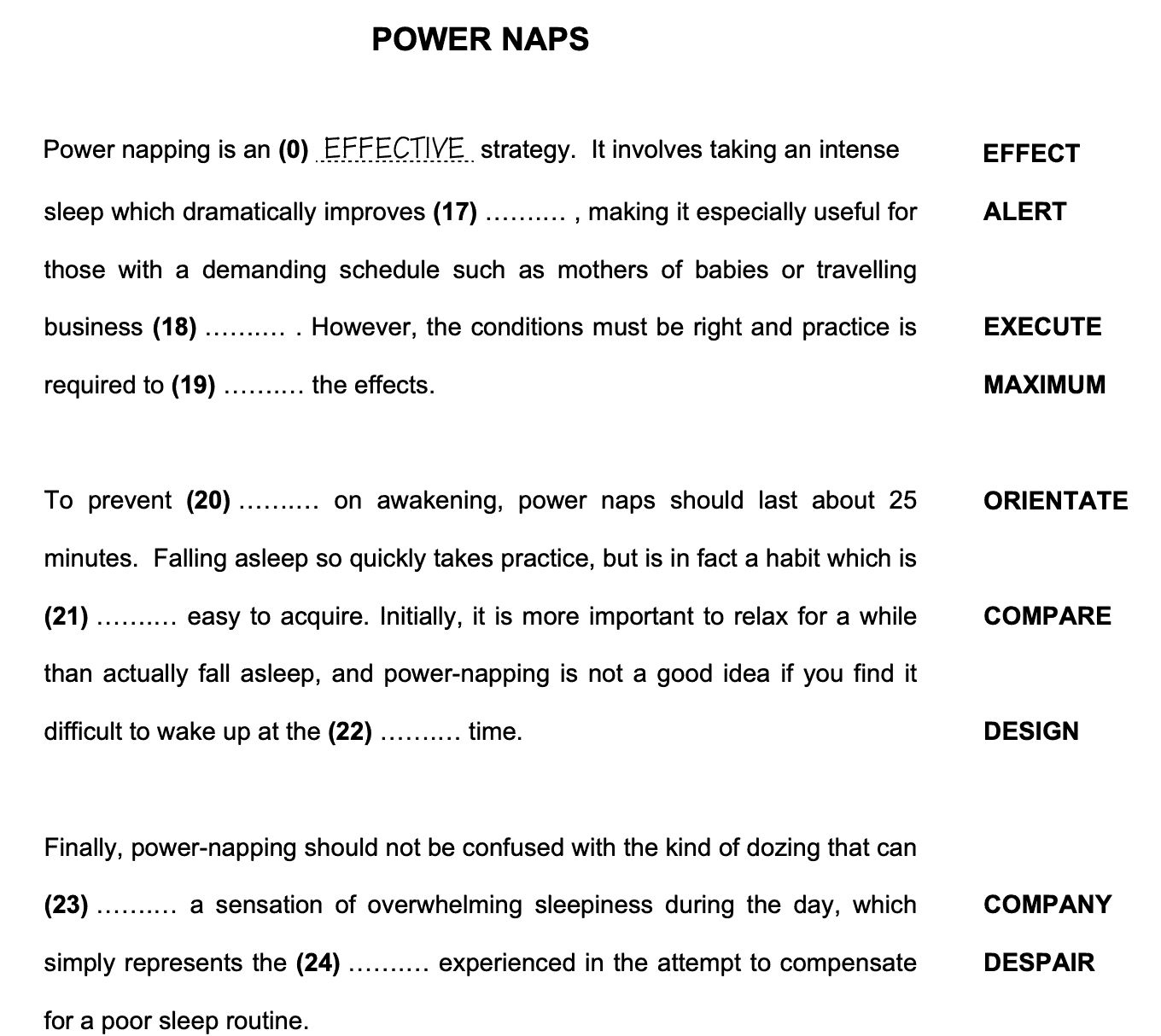
Collocations which surface in this task as a result of transforming the words provided include:
- improve alertness (17)
- business executives (18)
- designated time (22)
Overall C2 Proficiency Speaking Scales
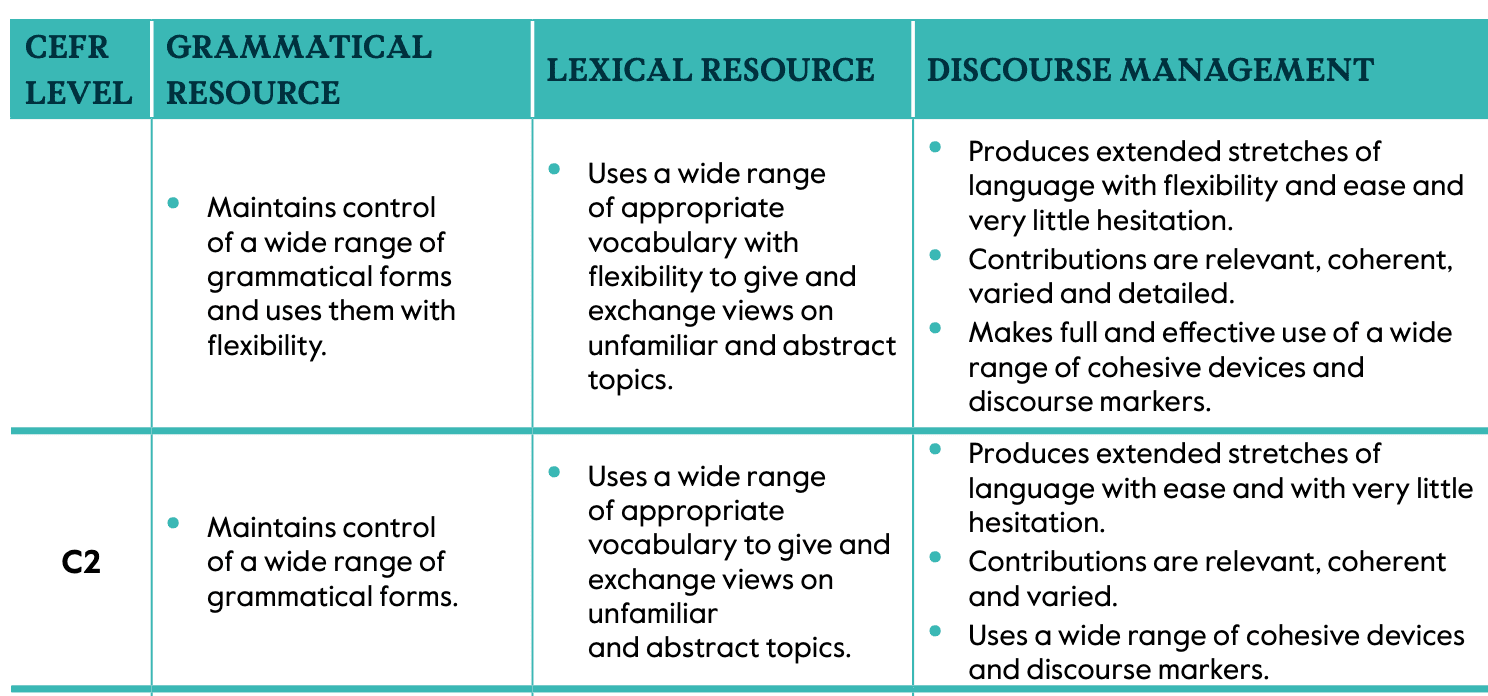
Looking at the speaking scales for the C2 level on the Common European Framework of Reference for Languages (CEFR), it’s easy to infer that having masses of lexical chunks swimming in your brain can only help when it comes to satisfying the criteria pertaining to Lexical Resource and Discourse Management.
When it comes to the area of Lexical Resource, you certainly require lexical chunks to give and exchange views on unfamiliar and abstract topics. As for Discourse Management, you must be able to retrieve lexical chunks as a whole from your memory in order to produce extended stretches of language with flexibility and ease and very little hesitation. With regard to discourse markers, that is words and phrases which we use to connect and organise our ideas when speaking, they exist in the form of lexical chunks. Examples of multi-word discourse markers include:
- as a matter of fact
- by the way
- on the other hand
- in any event
- first of all
- in the end
C2 Proficiency exam preparation - Four months with an English Proficiency Teacher
If you’re seeking to team up with an English proficiency teacher to prepare for the C2 proficiency exam, I invite all interested candidates to sign up for regular classes (i.e. every three or four days) over a period of roughly four months.
Frankly, there is no need for these classes to last 60 or 90 minutes. 25-30 minutes per meeting is enough to get through the material I tend to use with more advanced students. Therefore, I get my students to prepay for 120 or 180 minutes. I keep a record of the precise amount of time each class lasts for. I am not one for teaching according to fixed lesson times. If a class lasts for 29 minutes, I record 29 minutes. In my view, the ideal length of a private online language lesson is between 25 and 30 minutes. The regularity of meetings is much more important than the length of sessions.
I’m not a big believer in the advance planning of courses and curricula because things can change quickly depending on how quickly a student makes progress or gets to grips with challenging authentic materials.
Before beginning to tackle the various parts of the C2 Proficiency Listening, Speaking, Reading and Use of English and Writing papers in months three and four, I would devote months one and two to the real-world use of English found in authentic materials. Examples of authentic materials I use with my students include TED Talks, online news articles (especially from the BBC, The Guardian, The Independent) and blog posts. Drawing candidates' attention to the many lexical chunks in these materials, as well as discussing the main points the authors raise, serves as useful preparation for the reading, listening and speaking parts of the C2 Proficiency exam prior to attempting sample tasks found in authentic examination papers.
Anyway, here’s a rough outline of what a four-month C2 Proficiency exam preparation course would look like with me:
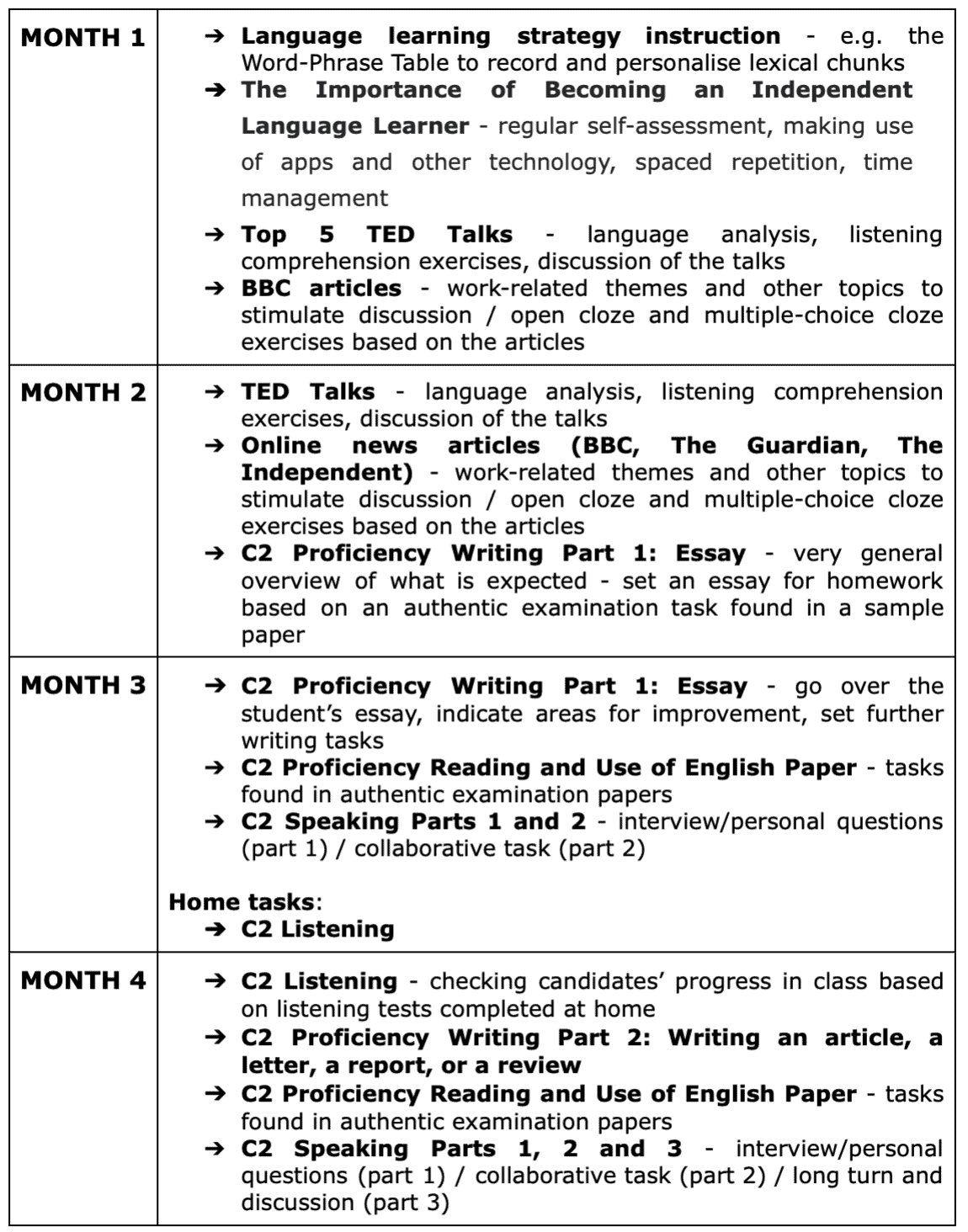
Why can you rely on me to help you pass the C2 Proficiency Exam with flying colours?
Having taught English since 2006 and gained a master’s degree in English Language Teaching, I have all the credentials to succeed as an English proficiency teacher and help you pass the C2 Proficiency exam with flying colours. Here are the main reasons why I am able to bring out the best in C2 Proficiency candidates:
- I have written extensive guides to acing the Reading and Use of English parts of the C2 Proficiency exam. I’ve also completed many authentic Reading and Use of English examination papers. Overall, I’m confident I can help you in the areas of time management and lexico-grammar - a key component of the Reading and Use of English paper. Lexico-grammar refers to the interdependence of syntax (grammar - the arrangement of words in a sentence) and lexis (i.e. vocabulary) in order to create meaning. Lexico-grammar is the focus of several tasks in the Reading and Use of English paper.
- I am fully aware of what spoken fluency in English entails. Fluent speech revolves around the ability to string together successive lexical chunks, utilising connected speech patterns and the use of the schwa sound in unstressed syllables and vowel sounds in function words, such as to, for, and an. Reducing function words can drastically speed up your speech.
- I have an extensive range of materials for use with C2 Proficiency candidates. These materials include authentic examination papers and practice tests prepared by Cambridge English Language Assessment, C2 coursebooks and C2 grammar and vocabulary books.
- I’ve written a comprehensive guide to acing the three parts of the C2 Proficiency Speaking test. I’m aware of the kind of grammatical structures, discourse markers and lexical chunks candidates should learn for this part of the exam.
- My definitive guide to part 1 of the writing paper - the compulsory discursive essay - proves my credentials when it comes to teaching writing skills.
Final Thoughts
To begin this summary, allow me to quote Elspeth Pollock once again: “the fear of teaching Proficiency is a fear we should face, because teaching Proficiency is actually an enjoyable, motivating challenge”. Indeed, how can language teaching be a vocation if there’s no challenge? What’s the purpose of being perpetually stuck in a comfort zone? Being an English proficiency with a view to preparing students for the C2 Proficiency exam is certainly no walk in the park. However, I’d like to believe I’m wise enough and experienced enough to guide C2 Proficiency exam candidates to success.
I’m aware that I need to help C2 proficiency candidates with becoming independent language learners whereby they can engage in activities such as voice recording to monitor their progress. Moreover, I know that I constantly need to drive home the message that successful learners need to have several language learning strategies at their disposal to record and repeat newly learned lexical chunks.
References:
Lindstromberg, S., and Boers, F. (2008). Teaching Chunks of Language: From noticing to remembering, Helbling Languages
Timmis, I. (2015). Corpus Linguistics for ELT: Research and Practice, Abingdon, Oxon: Routledge
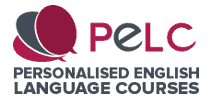
![On becoming an English Proficiency Teacher [C2 Proficiency/CPE Tutor Online] On becoming an English Proficiency Teacher [C2 Proficiency/CPE Tutor Online]](https://englishcoachonline.com/wp-content/uploads/bfi_thumb/dummy-transparent-rg2kv2k5nr01ke3prtf1girxgqjz1assz72e5qd9w2.png)

